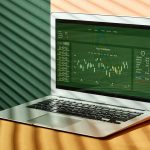When trading CFDs, you can speculate on the price of various assets, including stocks, indices, commodities, and currencies. It gives traders flexibility that is unmatched in most other forms of trading. Additionally, because you are trading CFDs and not owning the underlying asset, your risk is limited to the amount you invest in each trade. It makes CFD asset trading an attractive proposition for traders who want to minimise their risk while maximising their potential profits.
What is CFD asset trading, and how does it work?
CFD, or Contract for Difference, asset trading is a type of derivatives trading that allows you to speculate on the price movement of an underlying asset without actually owning the asset itself. For instance, if you think the price of gold will go up, you can open a CFD trade on gold and make a profit if the price rises. Similarly, if you think the price of oil will fall, you can open a short CFD position and make a profit if the price falls.
To trade CFDs, you must choose an instrument and an account type with a CFD broker offering that particular instrument. Once you have done this, you will require to deposit some funds into your account to place trades. It is important to note that you will only ever need to deposit a small percentage of the total value of your trade, as this is used as a margin. For example, if you wanted to trade $10,000 worth of gold, you would only need to deposit a small percentage of this amount, typically around 5%, into your account.
Once your account is funded, and you have chosen an instrument to trade, you must decide whether to go long or short on that particular asset. If you think the price is going to rise, you will go long, and if you think the price is going to fall, you will go short. You can then place a trade accordingly and wait for the market to move. If the market moves in the direction you predicted, you will make a profit. If it moves against you, you will make a loss.
It is important to note that CFD trading is a leveraged product, meaning you are only required to deposit a small percentage of the total value of your trade. It can result in high profits if your trade is booming, but it can also result in high losses if it is unsuccessful. Therefore, it is essential to carefully consider your risk appetite and investment goals before trading CFDs.
What are the benefits of CFD asset trading?
CFD asset trading offers many benefits for traders, including:
Access to a wide range of assets- When you trade CFDs, you can trade a wide range of assets, including stocks, indices, commodities and currencies. It gives you the flexibility that is unmatched in most other forms of trading.
Leverage- CFD trading is a leveraged product, meaning you only need to deposit a small percentage of the total value of your trade. It can result in high profits if your trade is booming, but it can also result in high losses if it is unsuccessful.
What are the risks of CFD asset trading?
CFD asset trading is a risky proposition, and there are many risks to consider before trading. These include:
Leverage- CFD trading is a leveraged product, meaning you only need to deposit a small percentage of the total value of your trade. It can result in high profits if your trade is booming and high losses if your trade is unsuccessful.
Market risk- The value of your CFD trade will fluctuate according to the underlying asset price. If the market moves against you, you will make a loss.
Counterparty risk- When you trade CFDs, you enter into a contract with your broker. If your broker becomes insolvent, you may not be able to recover your losses.





